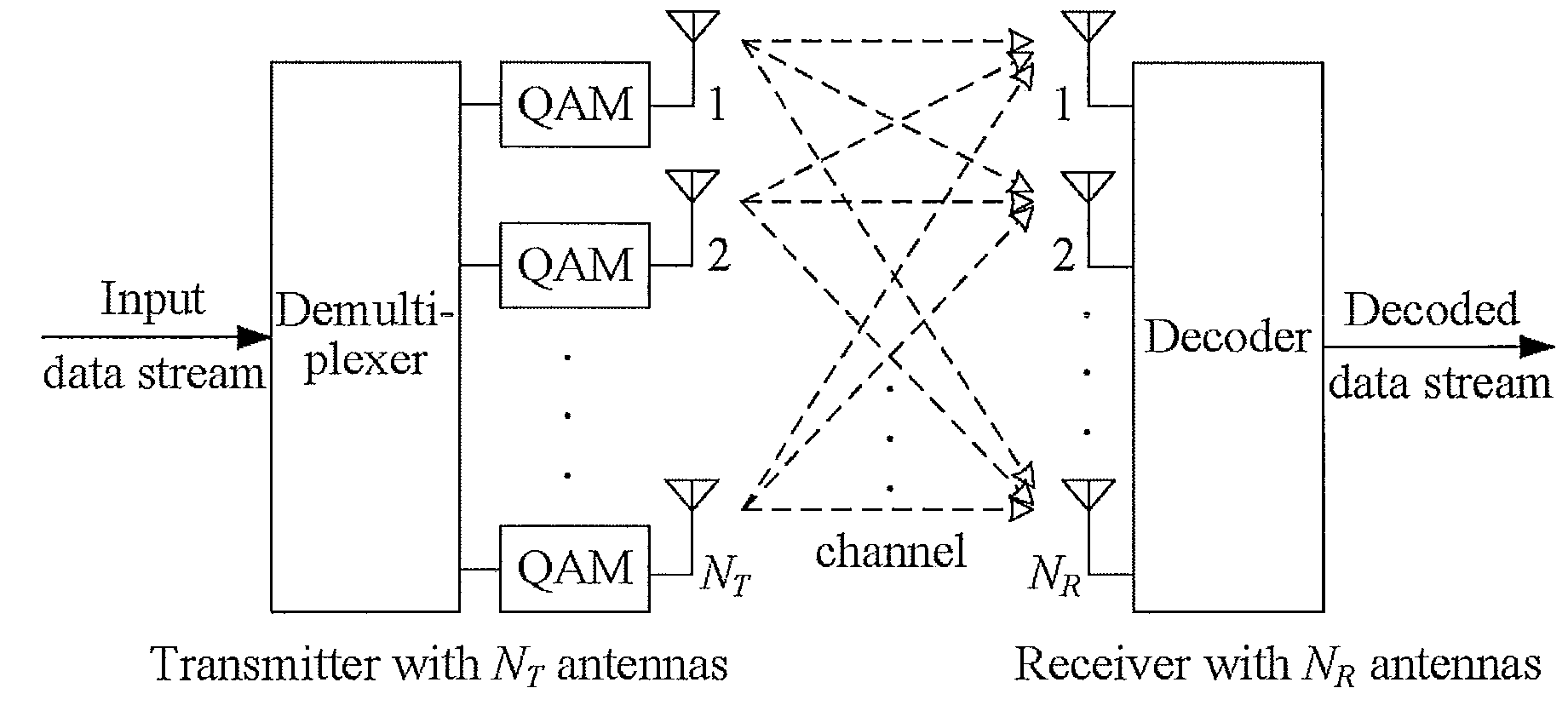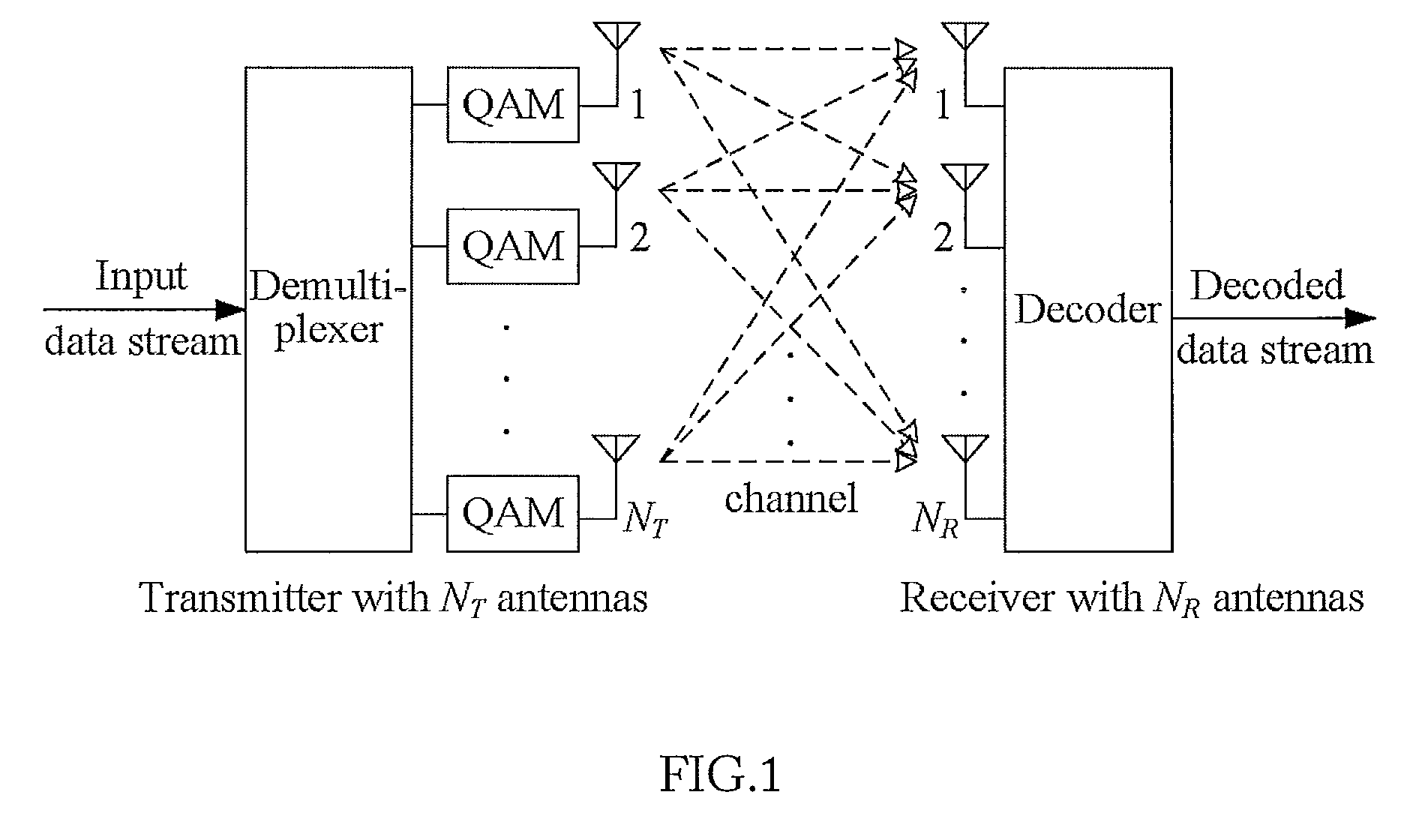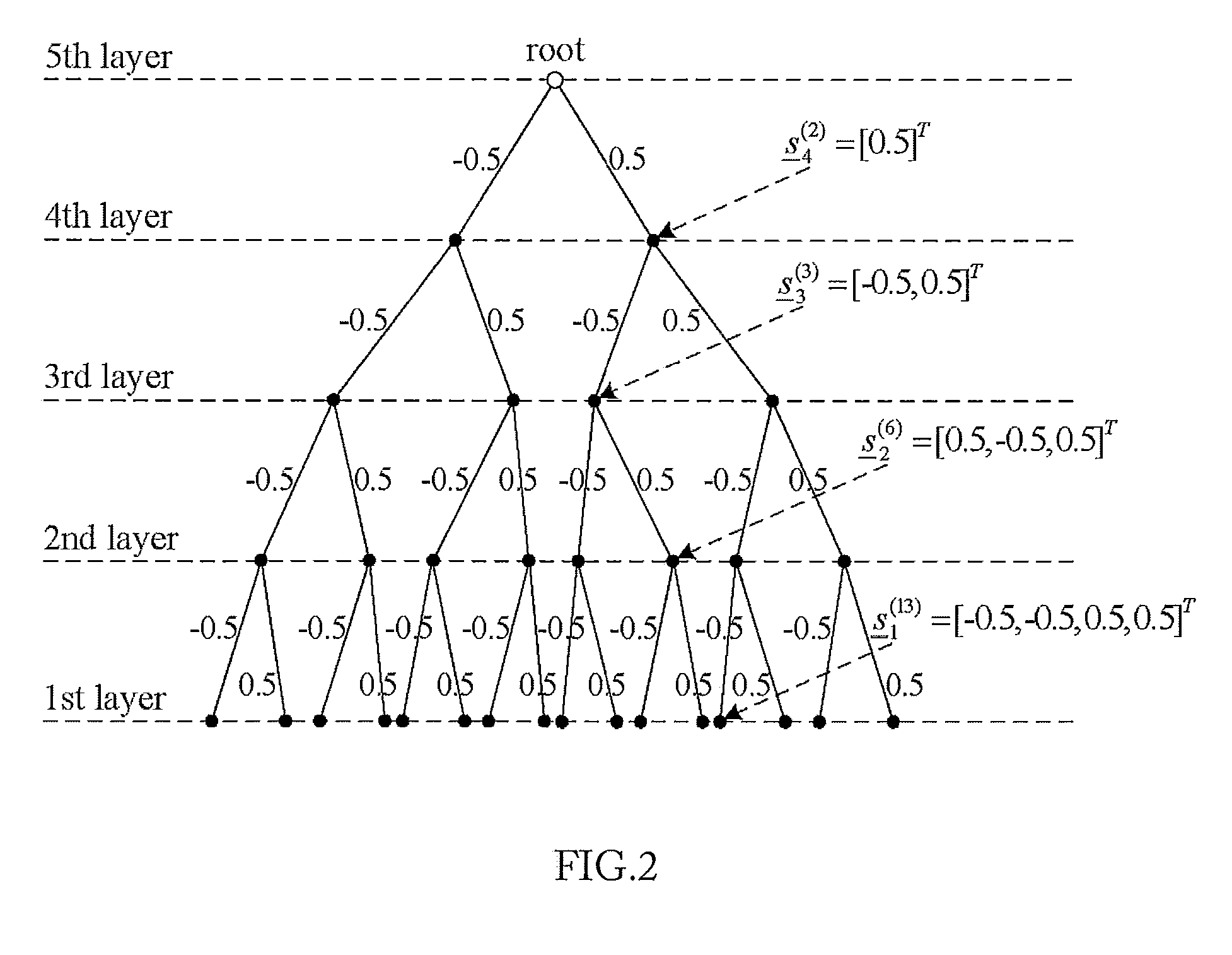Near ml decoding method based on metric-first search and branch length threshold
- Summary
- Abstract
- Description
- Claims
- Application Information
AI Technical Summary
Benefits of technology
Problems solved by technology
Method used
Image
Examples
Embodiment Construction
[0025]FIG. 1 shows a block diagram of the MIMO system with NT transmit and NR receive antennas. We assume that the data stream is demultiplexed into NT sub-streams and then sent simultaneously from the NT transmit antennas to the NR receive antennas over a rich-scattering, flat fading wireless channel. It is also assumed that a common quadrature amplitude modulation (QAM) is employed for all the sub-streams. Then, denoting by {tilde over (y)}j the complex signal received at the j-th receive antenna, the discrete-time baseband model of the received signal vector {tilde over (y)}=[{tilde over (y)}1,{tilde over (y)}2, . . . ,{tilde over (y)}NR]T can be expressed as
{tilde over (y)}={tilde over (H)}{tilde over (s)}+{tilde over (v)}, (1)
where the superscript T indicates the vector transpose, {tilde over (H)} is the NR×NT channel matrix of independent and identically distributed (i.i.d.) complex Gaussian random variables with mean zero and unit variance, {tilde over (s)}=[{tilde over (s)...
PUM
 Login to View More
Login to View More Abstract
Description
Claims
Application Information
 Login to View More
Login to View More - R&D
- Intellectual Property
- Life Sciences
- Materials
- Tech Scout
- Unparalleled Data Quality
- Higher Quality Content
- 60% Fewer Hallucinations
Browse by: Latest US Patents, China's latest patents, Technical Efficacy Thesaurus, Application Domain, Technology Topic, Popular Technical Reports.
© 2025 PatSnap. All rights reserved.Legal|Privacy policy|Modern Slavery Act Transparency Statement|Sitemap|About US| Contact US: help@patsnap.com



